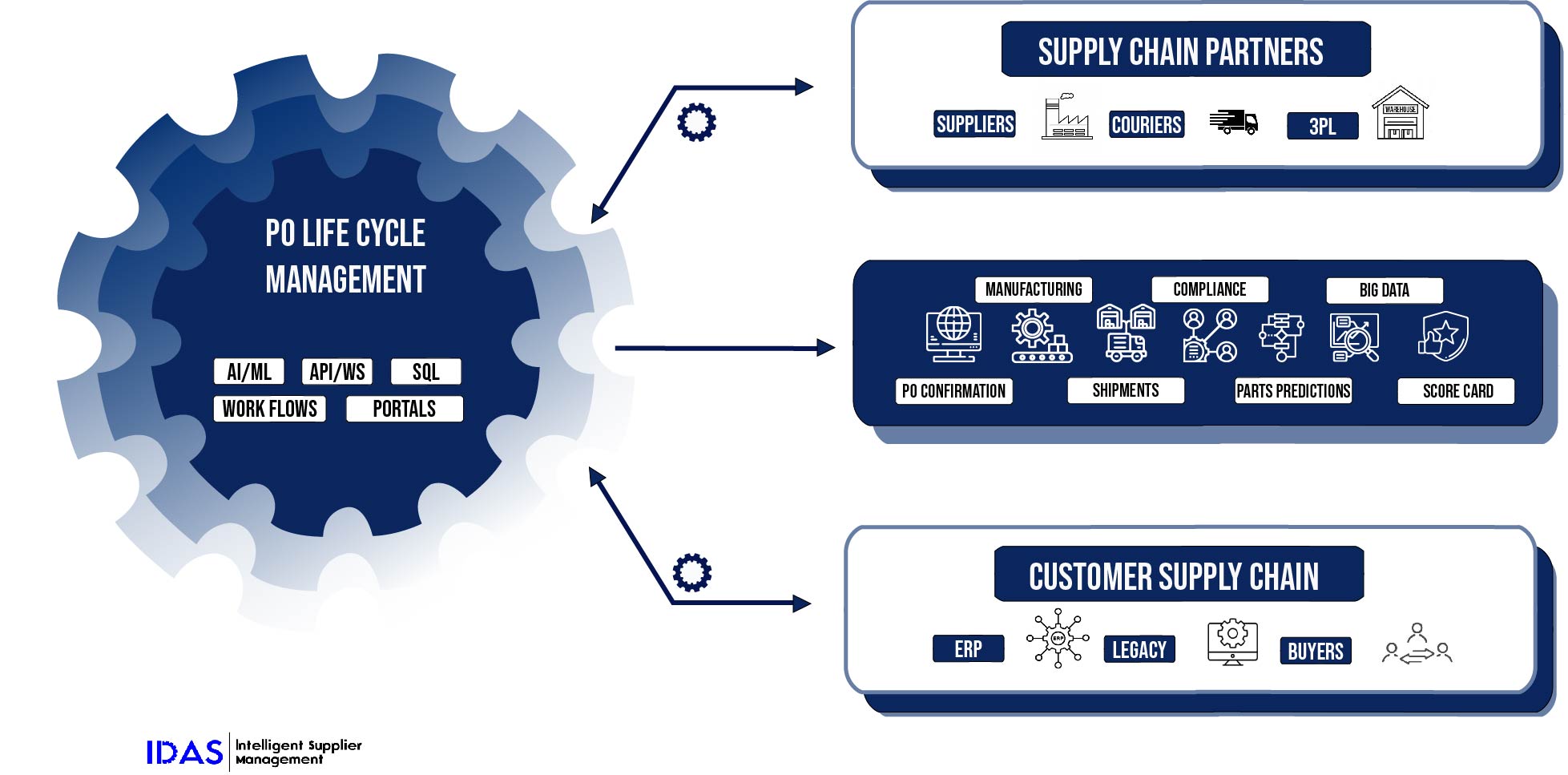Blogs
- Home
- »
- Blogs
Data orchestration in the purchase order (PO) life cycle
05 July 2024
The PO life cycle involves numerous internal and external parties and data sources. Starting with internal supply chain and purchasing stakeholders and internal systems with the main one being the ERP system (In many cases you'll find companies with more than one ERP system due to multiple past acquisitions of smaller companies), financial systems, quality systems and other data systems. External parties will include suppliers, subcontractors, forwards, and others. Thus, Procurement processes can often feel overly complex and time-consuming: The amount of data and processes involving all the above parties is enormous, making the process of coordinating and managing various activities and resources to help manage the purchase order life cycle, difficult.

PO life cycle data orchestration solves these issues by facilitating an integrated, collaborative layer across all existing tools and systems, ensuring supply chain, procurement leaders, and suppliers maintain full control at every stage of the procurement process. This enables all key stakeholders of the purchase order; the procurement agent, the requester, and the supplier to track and monitor the execution cycle of the order and initiate and manage changes to the order in any of its stages: from receive, to manufacturing, shipping and receiving cycle. When the tools, people, and processes are unified, they are all ‘orchestrated’ together, working both in rhythm and in harmony and helping build better visibility, traceability and collaboration between internal and external parties, making procurement complexity less visible or even disappear.
How much of a problem are late supplier deliveries, and would you say yes to a solution?
These are among the key components of data orchestration in procurement:…
1. Data Integration: Consolidating data from multiple sources (e.g., suppliers, inventory systems, financial systems, ERP systems) into a unified view. A small example to illustrate the importance of data integration: Many customers with various manufacturing facilities and ERP systems, may have multiple vendor codes for the same supplier. Data integration will help unify all the vendor codes into one view, allowing the supplier to save time by viewing all of its open PO’s in one portal and allowing the supply chain team to better understand the requirements pushed to the supplier from the different facilities of the company.
2. Automation: Implementing automated workflows to handle repetitive tasks and processes, reducing manual intervention and the potential for errors. Not only limited internal workflows like PO approvals but also workflows that involve external stakeholders like suppliers.
3. Real-time Updates: Ensuring that data is updated in real-time across all systems to maintain accuracy and reliability. For example, receiving real-time feeds of supplier’s finished goods and work-in-process quantities and updating internal manufacturing systems with this vital information can help keep the manufacturing process working with no unexpected shortages.
4. Data Validation and Consistency: Verifying data accuracy and ensuring consistency across all systems to prevent discrepancies.
5. Analytics, Reporting, AI and ML: Providing tools for monitoring, analyzing, reporting and predicting on PO data to support strategic decision-making and helping the supply chain and procurement team make proactive decisions and not reactive decisions after an event has already affected the manufacturing floor.